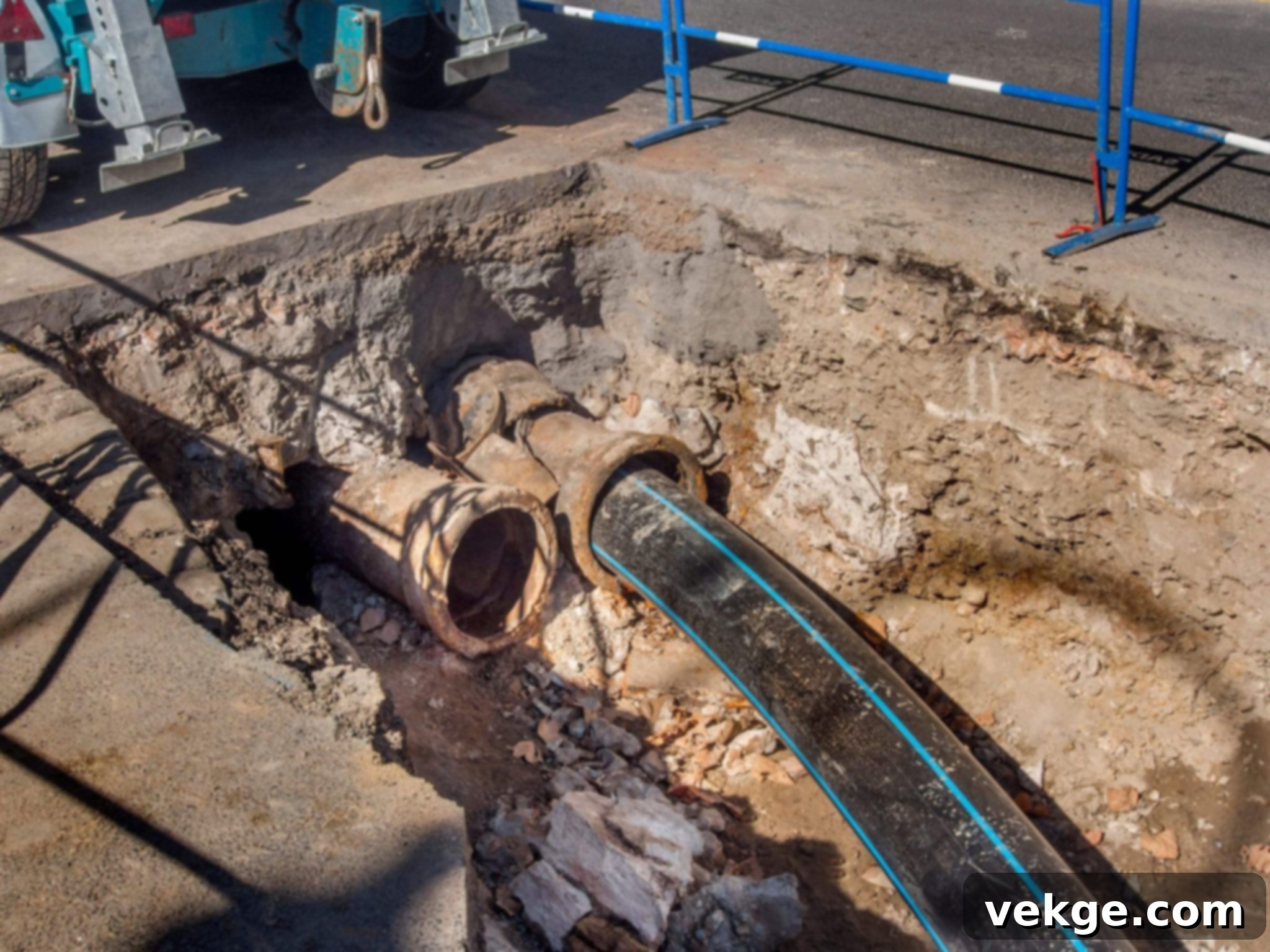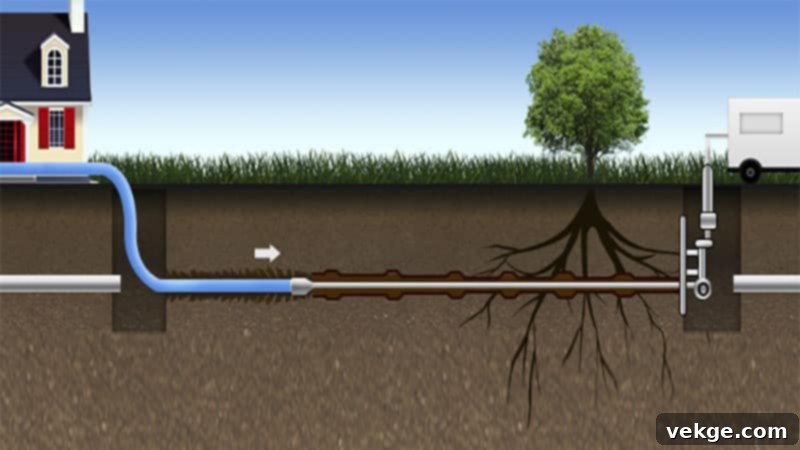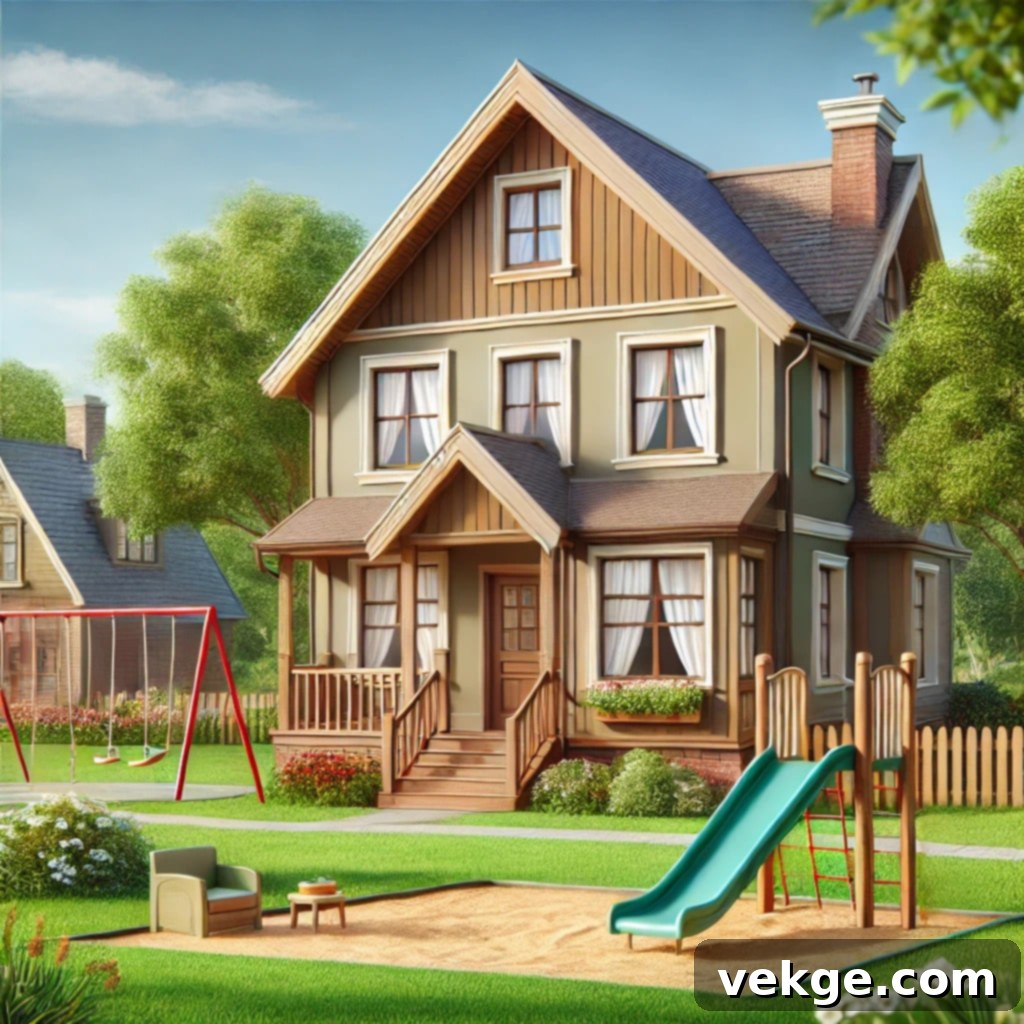Trenchless Sewer Repair: The Modern Solution for No-Dig Pipe Replacement
Dealing with sewer line issues like persistent blockages, unpleasant backups, or problematic leaks is a homeowner’s nightmare. Traditionally, these critical plumbing problems have meant extensive excavation, turning your yard into a construction zone and incurring significant costs in both labor and landscape restoration. However, the plumbing industry has evolved dramatically, offering a groundbreaking alternative: trenchless sewer line replacement. This innovative approach provides a far more efficient, less invasive, and often more economical solution to address underground pipe damage.
Often referred to as “no-dig sewer repair” or “pipe rehabilitation,” trenchless technology minimizes the disruption to your property. Instead of digging long, unsightly trenches across your lawn, driveway, or garden, this method typically requires only a couple of small access points. This means faster completion times—often within a day or two—and significantly reduced costs associated with repairing damage to your landscaping. The two primary techniques employed in trenchless repair are pipe bursting and pipe lining, both designed to resolve severe sewer problems with minimal stress and maximum efficiency. Let’s explore these methods and understand why trenchless sewer repair is rapidly becoming the preferred choice for homeowners facing underground plumbing challenges.
What is Trenchless Sewer Repair and Why is it Essential for Modern Homes?
For decades, addressing compromised sewer lines meant resorting to conventional repair methods. These techniques involved significant excavation: digging deep, wide trenches to expose the entire length of the damaged pipeline. Workers would then painstakingly remove the old, faulty pipes and install new ones, a process that could easily take a week or more to complete, leaving behind a scarred landscape and a hefty bill for restoration. Trenchless sewer repair fundamentally alters this paradigm. It allows for the existing pipeline to be repaired or completely replaced without the destructive need to unearth and dispose of the old pipe.

The process begins with a crucial diagnostic step: a high-resolution camera inspection. A small, waterproof camera is inserted into the sewer line through an existing access point, allowing technicians to visually assess the nature and extent of the damage. This initial inspection is vital for determining the most appropriate trenchless repair method, whether it’s pipe bursting for a complete replacement or pipe lining for rehabilitation. Both pipe bursting and pipe lining methods are celebrated for their ability to preserve valuable landscaping, delicate sidewalks, and intricate underground utilities, offering a clean, efficient, and long-lasting repair solution.
Exploring Pipe Bursting: A Full Sewer Line Replacement with Minimal Disruption
Pipe bursting is a powerful trenchless technique used for completely replacing an old, severely damaged sewer line with a brand-new one, often made from high-density polyethylene (HDPE). This method is particularly effective for pipes that are extensively corroded, collapsed, or frequently blocked beyond simple cleaning or patching. The process involves creating two small access points – an entry pit and an exit pit – at each end of the existing sewer line. These pits are typically much smaller and less disruptive than the extensive trench required by traditional methods.
A specialized, cone-shaped bursting head, attached to a new HDPE pipe, is then inserted into the old line through one of the access pits. As the bursting head is hydraulically pulled or pushed through the old pipe, its increasing diameter fractures and breaks apart the existing pipe from the inside. Simultaneously, the new, durable HDPE pipe follows immediately behind the bursting head, taking the place of the old line. This seamless, continuous process means a new, robust sewer line is installed in the exact same path as the old one, but with significantly enhanced structural integrity and flow capacity. A key advantage of pipe bursting is its ability to allow for an increase in the diameter of the pipes, which can significantly improve sewage flow and reduce the likelihood of future blockages, making it an excellent upgrade for older plumbing systems.
Understanding Pipe Lining: Restoring Your Sewer Line from Within
Pipe lining, also widely known as Cured-In-Place Pipe (CIPP) lining or structural pipe lining, offers a rehabilitation solution for pipes that are cracked, leaking, or suffering from minor damage but are still structurally sound enough to serve as a host for a new inner pipe. This method involves creating a new pipe within the old one, effectively sealing off leaks and reinforcing the existing structure without digging it up. The core of this technique is a flexible, felt-like liner that has been saturated with a specialized epoxy resin. This resin-coated sleeve is then inserted into the damaged pipe through a small access point, often an existing cleanout.
Once inside, the liner is inflated using air or water pressure, pressing it firmly against the interior walls of the existing pipe. This ensures that the epoxy resin makes full contact with the host pipe, filling any cracks or gaps. The epoxy then begins a curing process, which can occur naturally over several hours (ambient curing) or be accelerated using steam or ultraviolet (UV) light, significantly reducing the drying time. Within a few hours, the resin hardens, forming a new, seamless, and incredibly durable pipe-within-a-pipe. This new epoxy lining effectively seals off all leaks and strengthens the original pipe, which can be made from various materials such as plastic, clay, cast iron, concrete, or PVC. After the curing is complete, the inflation device is removed, leaving behind a robust, corrosion-resistant, and free-flowing new pipe interior that can last for 50 years or more. Other variations include applying a resin coating that is either sprayed or brushed onto the interior of the old pipe for less severe damage, or installing a smaller diameter pipe (a “slip-lining” technique) and filling the annulus with grout.
Why Choose Trenchless Sewer Repair? The Unbeatable Advantages
The evolution of plumbing technology has made repairing critical sewer lines significantly simpler and less disruptive. Trenchless sewer repair stands out as a superior choice for a multitude of reasons, offering distinct advantages over traditional excavation methods. When considering a major sewer line repair or replacement, understanding these benefits is key to making an informed decision:
- Minimal Property Damage: This is arguably the most significant advantage. Instead of trenching through your beautifully landscaped yard, tearing up your driveway, or damaging pathways, trenchless methods require only one or two small access points. This preserves your property’s aesthetics and saves you the considerable cost and effort of post-repair landscape restoration.
- Faster Completion Times: Traditional sewer line repairs can drag on for days, even weeks, disrupting your daily life. Trenchless repairs, thanks to their streamlined processes, are often completed within one to three days, getting your plumbing system back in order much quicker.
- Cost-Effectiveness in the Long Run: While the upfront cost of trenchless repair can sometimes be comparable to traditional digging, it becomes far more economical when you factor in the avoided expenses of landscape repair, driveway repaving, or structural damage rectification. The long lifespan of the new materials (50+ years) also reduces future repair needs.
- Environmentally Friendly: By minimizing excavation, trenchless methods reduce soil disruption, prevent potential contamination from exposed sewage, and lessen the amount of waste sent to landfills. It’s a greener approach to plumbing repair.
- Enhanced Durability: The new piping materials used in trenchless repair, particularly HDPE for pipe bursting and epoxy resins for pipe lining, are incredibly robust. They are resistant to corrosion, tree root intrusion, and chemical damage, offering a more durable and longer-lasting solution than many older pipe materials.
- Versatile Application: Trenchless technology can effectively reach difficult areas that are inaccessible or too costly to excavate, such as pipes running under buildings, foundations, driveways, mature trees, or public roads.
- Less Disruption to Daily Life: With minimal construction activity on your property, you can often remain in your home during the repair process, and your routine is far less interrupted compared to a full-scale excavation.
These compelling benefits highlight why trenchless sewer repair is not just a modern convenience but a smart investment in the long-term health and value of your property.
What Is the Cost of Trenchless Sewer Repair? A Detailed Breakdown

The cost of trenchless sewer repair can fluctuate significantly, influenced by a variety of factors. While often more cost-effective in the long run, understanding the initial investment requires considering several variables:
- Geographic Location: Prices for plumbing services, including trenchless repair, can vary considerably by state, city, and even neighborhood, largely due to differences in labor costs, local regulations, and material availability.
- Pipe Characteristics: The shape, size (diameter), length, and depth of the existing pipeline all play a crucial role. Longer, wider, or deeper pipes generally require more materials and specialized equipment, increasing the overall cost.
- Extent and Type of Damage: A minor crack might be less expensive to line than a fully collapsed section requiring bursting. The severity and nature of the damage directly impact the complexity of the repair and the materials needed.
- Accessibility: How easily technicians can access the sewer line influences labor time and complexity. Pipes located under structures, dense landscaping, or concrete slabs may incur higher costs due to specialized access requirements.
- Proximity to Main Sewer Line: The distance your property’s sewer line extends to the municipal main can also affect the project’s scope and cost.
- Method Selected: As mentioned, there are two primary trenchless methods. Pipe lining (CIPP) typically ranges from $3,000 to $12,000, while pipe bursting, which involves a full replacement, can be slightly higher, often falling between $4,000 and $15,000. For comparison, traditional digging methods, when accounting for full excavation and restoration, can range from $8,000 to $25,000 or even more, particularly for long or deep lines.
- Additional Factors: These might include the need for permits, extensive initial camera inspections (if billed separately), clean-up, and any unforeseen complications that arise during the repair.
It’s important to remember that while the upfront cost might seem substantial, the savings from avoiding landscape restoration, property damage, and extended project timelines often make trenchless repair the more economical choice overall. Homeowners insurance may cover repair costs if sewer line backups cause damage inside your home, so it’s always worth checking your policy. Additionally, your municipality or county might bear some expenses if the damage occurs on public property or within an easement under their responsibility. Always obtain a detailed quote from a licensed professional that outlines all potential costs involved.
Pros and Cons of Investing in Trenchless Sewer Repair
While trenchless sewer repair offers a compelling modern solution, it’s beneficial for homeowners to weigh both its advantages and potential limitations before making a decision. Understanding the full picture ensures you choose the best repair method for your specific situation.
Pros of Trenchless Sewer Repair:
- Minimal Property Disruption: As highlighted, this is the biggest draw. Your garden, driveway, and landscaping remain largely intact, saving you time, money, and hassle on restoration.
- Reduced Labor and Overall Costs: Fewer hours spent digging and significantly less post-repair cleanup translate to lower labor costs. When you consider the avoided expenses of repairing damaged property, the overall cost-effectiveness often favors trenchless methods.
- Faster Project Completion: Most trenchless jobs are finished in a day or two, meaning your sewer system is operational again quickly, and life returns to normal much faster.
- Longer-Lasting Results: The materials used in trenchless repair, like HDPE pipes and epoxy liners, are highly durable, resistant to corrosion, root intrusion, and typically come with a lifespan of 50 years or more, providing a robust, long-term solution.
- Environmentally Friendly: Less excavation means less disruption to the local ecosystem, reduced carbon footprint from heavy machinery, and less waste going to landfills.
- Improved Flow (Pipe Bursting): Pipe bursting allows for the possibility of upsizing your sewer line, which can improve drainage and prevent future blockages.
Cons of Trenchless Sewer Repair:
- Not Suitable for All Types of Damage: This is the primary limitation. Trenchless methods are most effective for pipes that are cracked, broken, or have root intrusion but still maintain their general shape. If a pipe has completely collapsed, is severely misaligned, or has extensive sections missing, pipe bursting may be possible, but pipe lining might not be effective.
- Inapplicability to Severely Damaged Pipes: If the original pipe is too compromised to serve as a guide for pipe bursting, or if there isn’t enough structural integrity for a liner to properly adhere, traditional excavation might be the only viable option.
- Initial Cost: While often more cost-effective in the long run, the initial investment for trenchless repair can sometimes be higher than a very basic, short-section traditional repair, especially if access is unusually difficult.
- Pipe Relocation: If the entire sewer line needs to be moved to a new location or a different slope, trenchless methods, which follow the path of the existing pipe, are not suitable.
- Diameter Limitations (Pipe Lining): While pipe bursting can increase pipe diameter, pipe lining creates a slightly smaller internal diameter. For residential applications, this reduction is usually negligible and doesn’t affect flow, but it’s a consideration.
By carefully evaluating these points against the specifics of your sewer problem, you can determine if trenchless repair aligns with your needs and budget.
Is Trenchless Sewer Repair Right for You? Making an Informed Decision
Ultimately, determining whether trenchless sewer repair is the ideal solution for your home depends on a thorough assessment of your specific situation. While it generally presents an attractive and modern alternative to traditional excavation, there are particular scenarios where it may not be the most appropriate or even feasible option. Understanding these nuances is crucial for making an informed decision that ensures the longevity and efficiency of your home’s plumbing system.
Consider trenchless repair first if your pipes are experiencing:
- Cracks, leaks, or small breaks that haven’t led to full collapse.
- Frequent blockages due to root intrusion.
- Minor corrosion or deterioration.
- Located under driveways, foundations, mature trees, or expensive landscaping that you wish to preserve.
- You prioritize minimal disruption and a quick turnaround time.
However, trenchless techniques may face limitations if:
- The pipes can only be accessed through extremely tight or impractical spaces that don’t allow for the necessary equipment.
- The original pipe has been improperly installed, has shifted significantly from its original position, or is sloped incorrectly, affecting gravity flow.
- The pipe has completely collapsed, burst into multiple pieces, or large sections are missing, preventing the use of a bursting head or liner as a guide.
- There are severe structural issues with the surrounding soil or utility conflicts that require traditional excavation for safety or access.
Given the complexity of underground plumbing systems, the most important step is to hire a licensed and experienced plumbing specialist in your area. An expert will perform a comprehensive camera inspection to accurately diagnose the problem and assess the viability of trenchless methods. They will be familiar with local soil conditions, regulations, and which trench repair methods are most effective for your specific type of damage and property layout. Their professional evaluation will guide you toward the most reliable, cost-effective, and long-lasting solution for your sewer repair needs.
